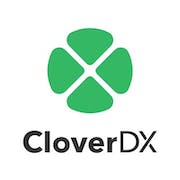Looking for the best data quality software? Our comprehensive buyers guide compares the top solutions, helping you make an informed decision for your business. Improve your data accuracy and analytics today!
Every organization needs to make sound decisions based on reliable data. However, without accurate, complete, and consistent data, decision-making can become a tedious and frustrating exercise in guesswork. This is where data quality software comes in. This technology allows organizations to ensure that the data they use to make critical decisions is reliable and trustworthy. With so many options on the market, choosing the right one can be a daunting task. This guide aims to provide a comprehensive overview of what to look for in a data quality solution and how to make an informed buying decision.
What is data quality software?
This refers to a set of advanced tools that ensure data accuracy, completeness, consistency, and validity. It is essential for any business that deals with large volumes of data to minimize errors and improve decision-making processes.
Here are some of its common use cases:
- Data cleaning: identifying and eliminating duplicate, incomplete, or irrelevant data.
- Data enrichment: improving data quality by adding missing information such as demographics, geographical data, and contact details.
- Data profiling: analyzing data to identify patterns, anomalies and trends, and improving metadata quality.
- Data governance: managing access, sharing, and standardization of data across the organization.
- Data integration: merging data from different sources to create a unified view of the organization's data.
This program can be used by companies of all sizes across various industries, such as healthcare, finance, retail, and manufacturing. Large enterprises that generate vast amounts of data and have complex IT infrastructures are more likely to use it. Mid-sized businesses that want to enhance their data-driven decision-making can also benefit from this type of system. Additionally, companies that focus on customer relationship management (CRM) and marketing automation can use the same technology to ensure data accuracy and completeness.
Data quality software is an essential tool for businesses that rely heavily on data. By ensuring data accuracy, completeness, consistency, and validity, it helps improve decision-making processes, increase customer satisfaction, and enhance organizational efficiency. With its numerous benefits and use cases, this solution is a must-have for any data-driven organization.
What are the benefits of using a data quality platform?
It's no secret that businesses rely heavily on data to make critical decisions. Inaccurate, incomplete, or inconsistent data can have significant consequences, leading to poor decision-making, lost revenue, and a bad reputation. This tool helps organizations identify and rectify data quality problems and ensures that the data being used is reliable, accurate, and relevant. Here are some of its benefits:
- Improved decision-making: With accurate and trustworthy data, businesses can make informed decisions, leading to better outcomes
- Increased efficiency:It can identify inconsistencies and errors in data, saving businesses time and effort in manually reviewing and correcting data.
- Cost savings:Poor quality data can result in wasted resources and lost revenue. By using a data quality platform, businesses can reduce the risk of financial losses due to incomplete or incorrect data.
- Better customer experience: Inaccurate data can result in poor customer service experiences. With data quality software, businesses can ensure that customer data is up-to-date and accurate, leading to a better customer experience. Poor data quality (incorrect, incomplete, or otherwise) is estimated to affect 40% of B2B leads.
- Compliance: It can also help businesses comply with regulatory requirements and data privacy laws, reducing the risk of legal problems and financial penalties.
Data quality software is a valuable investment for any business that relies on data to make decisions. By ensuring that data is accurate and reliable, businesses can save time and costs while improving their decision-making and customer experience.
10 key features of data quality software
This technology helps to ensure the completeness, accuracy, consistency, reliability, and timeliness of data, which are all critical factors in making informed business decisions. Here are 10 of its common advanced features:
1. Data profiling tool:
Data profiling is the process of analyzing data from various sources to understand its quality, structure, and metadata. This aspect helps to spot data errors, gaps, inconsistencies, and redundancies by generating statistical summaries and data visualizations.
2. Data cleansing:
This critical feature identifies and corrects anomalies or errors in data, such as typos, invalid values, duplicates, and formatting issues. This helps to maintain data accuracy and integrity, as well as to standardize data across different systems.
3. Data enrichment:
Data enrichment adds missing data elements, such as postal codes, demographics, or financial information, that can improve the completeness and relevance of data. This is particularly useful for customer data, where enriching it with third-party data sources can help to improve marketing and sales efforts.
4. Data matching
Data matching identifies duplicate or similar records across different data sources by comparing data values and algorithms. This feature helps to consolidate data and avoid data redundancy, which can lead to inconsistencies, errors, and increased storage costs.
5. Data monitoring
Data monitoring continuously checks data quality against predefined rules and alerts users on any deviations or anomalies. This feature helps businesses to keep track of data quality metrics over time and to proactively identify and address issues before they cause problems.
6. Data governance tool
Data governance refers to the formal management of data policies, standards, and procedures to ensure compliance with regulatory requirements and data quality objectives. This feature helps businesses to establish accountability, transparency, and traceability in data management processes.
7. Data lineage
Data lineage tracks data from its origin to its destination, providing a complete audit trail of how data is transformed, used, and stored within an organization. This feature helps businesses to improve data governance, traceability, and compliance.
8. Data validation:
Data validation checks data input against predefined rules, constraints, and formats to prevent errors and inconsistencies. This core function helps businesses to improve data accuracy, completeness, and consistency.
9. Data visualization
Data visualization presents data summaries and actionable insights in graphical form, making it easy for users to identify patterns and outliers. This element helps businesses to gain a better understanding of their data, as well as to communicate it effectively across different stakeholders.
10. Data integration
Data integration combines data from different sources into a single, unified view, enabling businesses to access, analyze, and use data more efficiently. This feature helps businesses to improve data consistency, accuracy, and effectiveness.
By adopting these common features, a data quality program can help businesses to ensure accurate, consistent, and reliable data, which is critical to making informed business decisions.
Things to consider when investing in data quality solution
Ensuring the quality and accuracy of data is critical for businesses to stay competitive. But with the vast amount of data being generated, it can be challenging to manage and maintain the quality of data, leading to inaccurate insights, lost revenue, and damaged reputation. This powerful tool can help businesses identify and remove inconsistencies, inaccuracies, and redundancies in their data. However, with a wide range of software options on the market, selecting the right one can be overwhelming. Here are some factors that businesses should consider before purchasing
- Integration capabilities: It is essential to choose a data quality solution that can integrate seamlessly with your existing application ecosystem. This can save you time and resources, reduce the risk of data loss or corruption during migration, and enhance your data management capabilities. Gartner predicted that by 2022, 70% of organizations would have rigorously began tracking data quality levels via metrics, improving it by 60% to significantly reduce operational risks and costs.
- Scalability: As your business grows, your data needs and volume will increase. Therefore, it is crucial to choose a data quality software that can scale with your business's changing needs and requirements.
- Robust data profiling and cleansing capabilities: The ability to profile and cleanse data is critical in improving data quality. When assessing this system, businesses should evaluate its data profiling capabilities, including its ability to identify and resolve data inconsistencies, duplications, and inaccuracies.
- Data quality monitoring and reporting: Continuous monitoring and reporting of data quality insights are essential to maintaining data accuracy over time. Thus, businesses must choose a data quality software that provides real-time monitoring capabilities and can generate reports that are easily understandable and actionable.
- User-friendliness: Data quality software should be easy to use, regardless of the user's technical expertise. It should have a user-friendly interface, and its functionalities should be easy to understand and execute.
- Pricing: Finally, businesses should consider the cost of the data quality software, including any hidden fees or additional costs for support or maintenance. Choosing a cost-effective solution that fits within your budget can help you ensure data accuracy without compromising your bottom line.
Industry trends for data quality software
Trend #1
Data quality software is an essential tool and valuable investment for businesses that want to maintain valid and accurate digital data. As we head further into 2024, there are several trends that companies should be aware of in this area. One of the most significant trends is the use of machine learning algorithms, which enable businesses to automate the process of detecting and correcting errors in their data. Another trend is the increasing popularity of cloud-based data quality solutions, which offers greater flexibility and scalability for organizations of all sizes.
Trend #2
A significant trend in this industry is the integration of analyticsand business intelligence tools. This enables companies to gain deeper accurate insights into their data and make more informed decisions. Additionally, real-time data monitoring has emerged as a critical trend, allowing businesses to detect and address issues as they happen. This is particularly important in industries such as finance and healthcare, where data accuracy is of the utmost importance.
Trend #3
One final trend that we expect to see in 2024 is the increased use of this solution for voice search optimization. As more consumers turn to voice assistants to search for products and services online, businesses must ensure that their digital content is optimized for this type of search. Data quality software can help companies to identify and correct errors in their voice search data, ensuring that their content is discoverable and relevant to users.
Conclusion
The evolution of this data technology is propelled by the imperative for precise and dependable data. Businesses are increasingly recognizing the critical role of accurate data in driving growth and success. By remaining informed and embracing emerging trends in this industry, organizations can effectively enhance the accuracy and reliability of their data assets. This, in turn, empowers them to make better-informed decisions, optimize operations, and gain a competitive edge in the dynamic digital marketplace. Therefore, investing in and leveraging advanced data quality software solutions is essential for businesses committed to thriving in an increasingly data-driven world.





